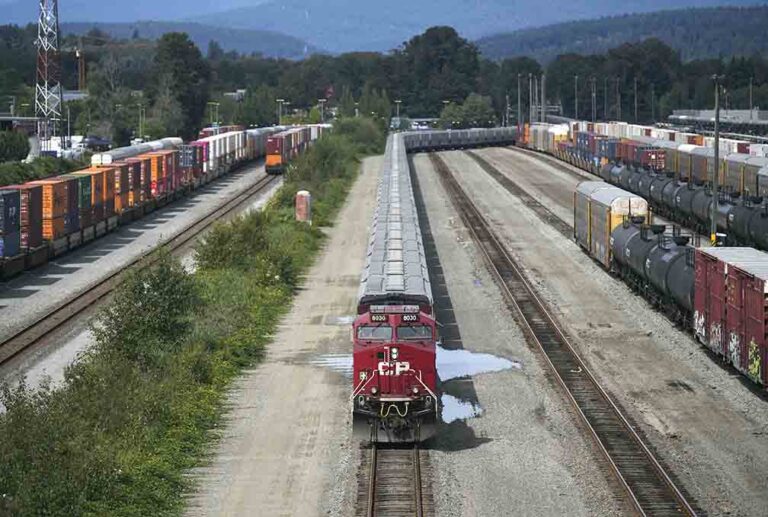Just when talk of an economic recession was beginning to fade, the stock market faltered: The Dow Jones Industrial Average dropped more than 1,000 points on Aug. 5, continuing a string of bad days.
The bad news was predicated by a U.S. Bureau of Labor Statistics report on Aug. 2 that showed fewer jobs added to the economy than had been expected, while the unemployment rate rose.
Internationally, Japan’s Nikkei 225 index experienced its worst decline in history as all major Asian and European markets fell drastically.
Pundits rushed to explain the declines, with many claiming the losses were caused by fears of recession. J.P. Morgan bumped its predicted odds of a recession before the end of 2024 up to 35%. Indicators such as the Treasury Note yield curve and the Sahm Rule are signaling bad news.
However, keep in mind that recession predictions are as varied as the economists and firms that make them, and no one can say with certainty what will happen to the global economy.
In the meantime, the U.S. Federal Reserve is predicted to cut interest rates at each of its remaining three meetings for the year, according to some economists. Interest rate increases were implemented to slow inflation, while reductions have the opposite effect. With inflation slowing, the Federal Reserve will attempt to prevent a recession while keeping the inflation rate at a desirable 2%.
Encouraging news on the freight front
For the trucking industry, the freight recession has been of more concern — and there’s some good news on that front.
The Motive Monthly Economic Report for August, written by Hamish Woodrow, head of strategic analytics, anticipates the trucking market will see positive growth by the end of November after nearly two years of contraction.
At long last, the supply and demand balance the industry needs to begin the positive side of the freight cycle seems to be in sight.
The Motive report cites strong consumer spending and increasing freight demand as two major reasons for the improvement. In June, Motive reported its Big Box Index, which tracks visits to the warehouses of the top 50 U.S. retailers, had risen 10.8% since May and was up 16% compared with last year’s index. All the data from July sales, such as Amazon’s Prime Day, hasn’t come in yet but is expected to push sales into record territory.
More good news is that retailers are expanding inventories in anticipation of a strong holiday shopping season. Visits to grocery and superstore warehouses have risen above 2021 levels, with department store, apparel and electronics warehouse visits running 30% higher than 2023, according to the report.
The nearshoring factor
Then, there’s Mexico, which has surpassed Canada as the No. 1 importer of goods into the U.S.
According to Motive, 675,000 trucks brought goods from Mexico to the U.S. in May alone, and those numbers are likely to continue increasing because of the “nearshoring” phenomenon. Computer-related machinery and electrical machinery are two commodities that are seeing growing production in Mexico. Imports from China have declined 19.9% from May 2022 and are expected to continue declining.
After being burned by supply chain issues during the COVID years, manufacturers that have long depended on China for parts and components are diversifying their sources.
Additionally, rising shipping costs from Asia to U.S. markets have prompted Asian manufacturers to invest in Mexico-based facilities where labor costs are also lower. Then there are tariffs, put in place for various reasons that might be reduced or avoided altogether by routing product through Mexico.
More signs of optimism
A survey of freight brokers conducted by Bloomberg and Truckstop.com showed that nearly half of brokers are optimistic that freight volumes will increase in the next three to six months. Over three quarters of respondents said they believe that freight rates have hit bottom and should begin rising soon.
The Cass Transportation Indexes, which track freight volumes and expenditures through billing activity of Cass customers, showed positive movement as well. The Cass Freight Index for Shipments rose 3% in July from June results while the Index for Expenditures rose 0.7%. While both shipment numbers and expenditures were down from 2023 levels, both are expected to rise as market growth continues.
According to the report, written by Tim Denoyer, ACT Research’s vice president and senior analyst, private fleet capacity additions have served to prolong the for-hire trucking downturn. Denoyer noted that publicly traded truckload fleets have reported operating 6.6% fewer tractors in the second quarter of 2024 compared to last year.
Denoyer also mentioned the upcoming U.S. presidential election as a potential factor, with concerns over the global economy and interest rates factoring into truck buying decisions.
The American Trucking Associations’ (ATA) Truck Tonnage Index, on a seasonally adjusted basis, rose by 0.3% in July, helping to offset a 1.8% June decline. The ATA Index, comprised from data submitted by its members, leans heavily to contract freight rather than spot freight markets.
“While July wasn’t a strong month, we see continued evidence that the truck freight market is likely turning a corner, albeit slowly,” said Bob Costello, ATA’s chief economist.
DAT Freight and Analytics reported July national average spot rates for dry van at $2.06 per mile, down slightly from June rates. Refrigerated rates also were down slightly, coming in at an average of 2.44 per mile. Flatbed rates saw the biggest decline from June’s average $2.51 per mile to July’s $2.47.
Canadian rail stoppage
One event that could very well send shock waves through the trucking industry is the work stoppage at Canada’s two largest railways, Canadian National (CN) and Canadian Pacific Kansas City (CPKC) railways. For the first time, labor contracts at both railways expired at the same time at the end of 2023. The companies locked out workers when an agreement was not reached by the deadline of 12:01 a.m. Eastern Aug. 22.
According to an Aug. 22 statement from Teamsters Canada, which represents about 10,000 engineers, conductors and yard workers at the two railroads and has threatened retaliatory strikes, the union “remains at the bargaining table with both companies.”
The Canadian railroads haul wood and forestry products sold in the U.S., potash used for fertilizer, and grain shipments. The stoppage will undoubtedly have an impact on the U.S. economy as well, although some truckers may benefit from increased truck shipments.
Cliff Abbott is an experienced commercial vehicle driver and owner-operator who still holds a CDL in his home state of Alabama. In nearly 40 years in trucking, he’s been an instructor and trainer and has managed safety and recruiting operations for several carriers. Having never lost his love of the road, Cliff has written a book and hundreds of songs and has been writing for The Trucker for more than a decade.








